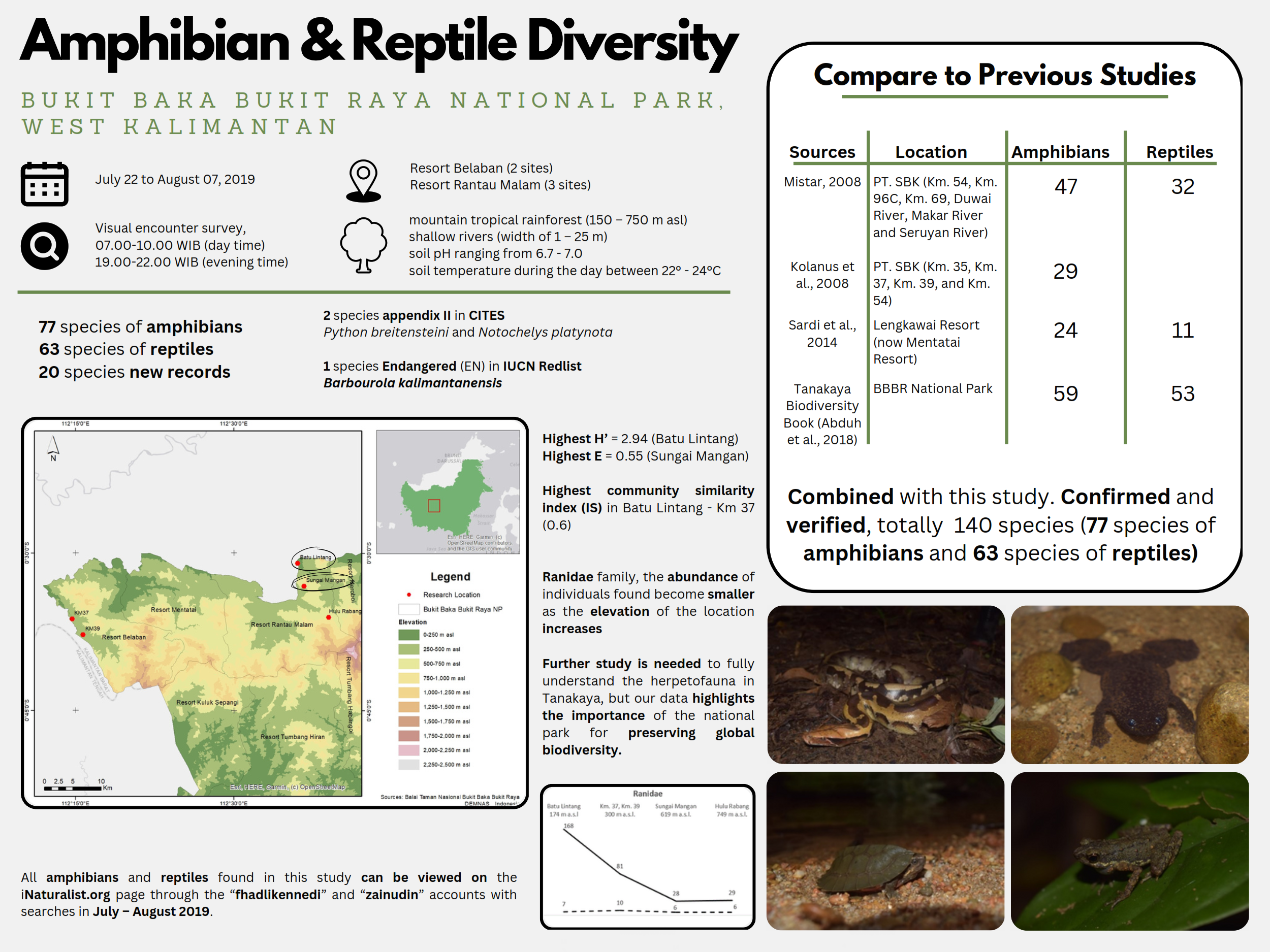Plant Biodiversity of MTR Forest Area in PT PLN Nusantara Power, Cirata, West Java
Abstract
The biodiversity park in the Cirata Reservoir MTR area is a part of Mount Cantayan, is located in Purwakarta Regency. The elevation of area is 140 to 280 meters above sea level with total area 11.2 hectares. The research aims to identify plant species and their diversity and provide recommendations for species enrichment in biodiversity parks. The data collection method used purposive sampling. Vegetation analysis is carried out using Nested Sampling. Vegetation data analysis includes the Important Value Index (IVI) and species diversity index (H’). The research results found 23 families consisting of 59 species including seedlings, saplings, poles and trees. Diversity index of Shanon-Wiener (H’) in for seedlings, saplings, poles and trees was 2.72; 3.34; 3.40 and 4.04. This diversity index is included in the high category. In the plant growth phase at seedling level, the highest IVI was for the kidahu (Dracontomelon dao) species at 82.95%. At the highest IVI sapling level, robusta coffee (Caffea canaephora) was 58.6%. At the pole level, the highest IVI was for mahogany (Swietenia mahogany) 300%, and at tree level, the highest IVI was obtained for mahogany (Swietenia mahogany) 174.7%. The recommendation species for enrichment planting in biodiversity park are 26 species. The species combination of Pingku (Dysoxylum densiflorum) (Blume) Miq., Tangkele (Kleinhovia hospita), Kosambi (Scleichera oleosa), Loa (Ficus variegata) and Nangsi (Villebrunea rubescens) has the potential to become the dominating plant species in the future.
Authors

This work is licensed under a Creative Commons Attribution 4.0 International License.

Media Konservasi is an open access journal, meaning that all content is freely available without charge to the user or their institution. Users are allowed to read, download, copy, distribute, print, search, or link to the full texts of the articles in this journal without needing to request prior permission from the publisher or the author.
All articles published by Media Konservasi are licensed under the Creative Commons Attribution 4.0 International License. This allows for unrestricted use, distribution, and reproduction in any medium, provided proper credit is given to the original authors.
Authors submitting manuscripts should understand and agree that the copyright of published manuscripts is retained by the authors. Copyright encompasses the exclusive rights of authors to reproduce, distribute, and sell any part of the journal articles in all forms and media. Reproduction of any part of this journal, its storage in databases, and its transmission by any form or media is allowed without written permission from Media Konservasi.





